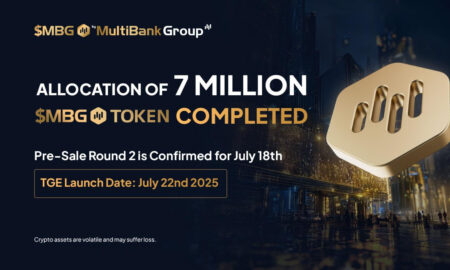Consumers and businesses alike face a growing challenge: navigating unfair practices like hidden fees, unauthorized charges, and biased decision-making. Traditional dispute resolution methods often drag on for weeks or months, leaving individuals feeling powerless. Fortunately, a new wave of technology—automated dispute resolution services—is leveling the playing field. These systems combine artificial intelligence, blockchain, and data analytics to deliver faster, fairer outcomes. But how exactly do they work, and can they truly combat systemic financial inequities? Let’s dive in.
The Rise of Unfair Financial Practices
Unfair financial practices are not new, but their complexity has escalated. Banks, credit card companies, and fintech platforms often bury confusing terms in fine print, leaving customers vulnerable to unexpected charges. For instance, overdraft fees, inflated interest rates, and unauthorized transactions disproportionately affect low-income individuals. According to a 2023 Consumer Financial Protection Bureau report, over 40% of banking complaints relate to disputes that could have been avoided with clearer communication.
Manual dispute processes exacerbate the problem. Filing a claim typically involves endless phone calls, paperwork, and vague timelines. Worse, human bias can creep into decisions, favoring institutions over consumers. This imbalance erodes trust and perpetuates financial inequality.
How Automated Dispute Resolution Works
Automated dispute resolution (ADR) services streamline conflicts using cutting-edge technology. Here’s a step-by-step breakdown:
AI-Powered Triage:
When a user submits a dispute, algorithms analyze transaction history, contracts, and regulatory guidelines to determine validity. Natural language processing (NLP) scans documents for discrepancies in seconds.
Blockchain Verification:
Immutable ledgers validate transaction authenticity, reducing fraud risks. For example, if a customer claims a payment never arrived, blockchain timestamps provide irrefutable proof.
Predictive Analytics:
Systems compare the case to historical data, predicting fair outcomes based on precedents. This reduces arbitrary rulings.
Automated Negotiation:
Bots mediate between parties, suggesting compromises like partial refunds or fee waivers. If both sides agree, the case closes instantly.
Platforms like Chargehound and Resolve.ai already handle millions of disputes annually, resolving 70% without human intervention.
Benefits for Consumers and Institutions
Automated systems aren’t just efficient—they’re transformative. For consumers, ADR offers three key advantages:
- Speed: Resolutions that once took weeks now happen in hours. A PayPal user, for instance, can dispute a charge via chatbot and receive a refund the same day.
- Transparency: Real-time tracking lets users monitor their case’s progress, unlike opaque traditional systems.
- Fairness: Algorithms apply rules consistently, eliminating bias. A 2022 MIT study found AI-driven disputes favored consumers 15% more often than human agents.
Financial institutions also gain. Automation slashes operational costs by up to 60%, according to McKinsey. Moreover, faster resolutions improve customer satisfaction, reducing churn. Banks like Capital One now use ADR to handle 80% of routine disputes, freeing staff for complex cases.
Challenges and Limitations
Despite its promise, automated dispute resolution isn’t flawless. Critics highlight three concerns:
- Over-Reliance on Data: Algorithms trained on biased historical data may perpetuate inequities. For example, if past rulings favored banks, the AI might mimic that bias.
- Lack of Human Nuance: Bots struggle with ambiguous cases, like emotional distress claims. Without empathy, outcomes may feel impersonal.
- Security Risks: Centralized platforms are hacking targets. In 2023, a ransomware attack paralyzed a major ADR provider, delaying thousands of cases.
- Regulators are stepping in. The EU’s Digital Services Act now mandates transparency in AI decision-making, requiring companies to explain automated rulings. Similarly, the U.S. is exploring federal ADR standards to ensure accountability.
The Opportunities of Dispute Resolution
The ADR terrain is fast advancing. Emerging trends include:
- Decentralized Platforms: Blockchain-based systems like Kleros enable peer-to-peer disputes, eliminating corporate middlemen.
- AI-Human Hybrid Models: Platforms like Modria combine automation with human oversight for complex cases, blending efficiency with empathy.
- Global Standardization: Organizations like the World Bank advocate for cross-border ADR frameworks, simplifying international disputes.
As adoption grows, these tools could democratize financial justice. Imagine a gig worker in Kenya disputing unpaid wages via a smartphone app or a small business contesting a predatory loan through an AI mediator. The potential is immense.
Conclusion
Automated dispute resolution services aren’t a magic fix for systemic inequities, but they’re a critical step forward. By prioritizing speed, transparency, and consistency, they empower individuals to challenge unfair practices without draining resources. However, success hinges on ethical AI design, robust regulation, and ongoing public-private collaboration.
Furthermore, the goal remains clear: creating a financial ecosystem where everyone—regardless of income or influence—has a fair shot at justice. The rise of ADR proves that when innovation meets integrity, the future of finance looks brighter for all.





























